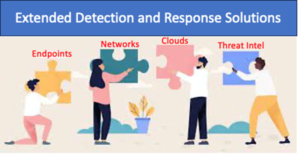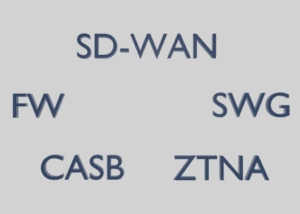In the rapidly evolving digital landscape, organizations are confronted with the mounting challenge of safeguarding their networks, data, and assets against unyielding cyber threats. As the threat landscape becomes more complex, traditional security solutions find it difficult to keep pace, leaving organizations exposed and fragmented in their defense strategies. Consequently, organizations worldwide seek a comprehensive solution that can efficiently identify, detect, and respond to security threats originating from diverse sources and devices. This is where Extended Detection and Response (XDR) technology emerges as a transformative game-changer.
XDR, rapidly becoming ubiquitous, offers organizations a comprehensive and integrated solution to combat the complex challenges they face. By consolidating and correlating security data from various sources across the entire IT environment, XDR provides a holistic view of security incidents. This enables faster, more accurate threat identification, detection, and response, empowering organizations to respond against cyber threats swiftly and decisively.
 The advantages of XDR are undeniable. With centralized visibility, security teams gain a unified dashboard, enabling better monitoring, detection, and response to threats across the organization. Advanced threat detection, fueled by contextual analytics, machine learning, and artificial intelligence, uncovers patterns and anomalies that siloed security solutions often miss. XDR enriches security incidents with contextual information, allowing security teams to prioritize and respond effectively, minimizing the impact of breaches. The automated response and remediation capabilities of XDR accelerate incident resolution, reducing manual effort and fortifying the organization’s ability to neutralize threats. Integration with threat intelligence sources ensures proactive defense against emerging threats. Additionally, the scalability and flexibility of XDR allow it to adapt to the ever-evolving security landscape, accommodating organizations as they grow.
XDR solutions in the market vary in terms of maturity, cohesiveness, and realization of their vision, making it daunting for organizations to choose the right type of XDR solutions. This gets further complicated to identify a solution based on some key metrics such as security resiliency and operational efficacy that best benefits their organization’s workflows. These areas are those where organizations lack a deeper understanding and insights into their solution selection criteria. They yearn for a new way to evaluate and compare XDR solutions to ensure they are choosing the right one for their unique security requirements.
The advantages of XDR are undeniable. With centralized visibility, security teams gain a unified dashboard, enabling better monitoring, detection, and response to threats across the organization. Advanced threat detection, fueled by contextual analytics, machine learning, and artificial intelligence, uncovers patterns and anomalies that siloed security solutions often miss. XDR enriches security incidents with contextual information, allowing security teams to prioritize and respond effectively, minimizing the impact of breaches. The automated response and remediation capabilities of XDR accelerate incident resolution, reducing manual effort and fortifying the organization’s ability to neutralize threats. Integration with threat intelligence sources ensures proactive defense against emerging threats. Additionally, the scalability and flexibility of XDR allow it to adapt to the ever-evolving security landscape, accommodating organizations as they grow.
XDR solutions in the market vary in terms of maturity, cohesiveness, and realization of their vision, making it daunting for organizations to choose the right type of XDR solutions. This gets further complicated to identify a solution based on some key metrics such as security resiliency and operational efficacy that best benefits their organization’s workflows. These areas are those where organizations lack a deeper understanding and insights into their solution selection criteria. They yearn for a new way to evaluate and compare XDR solutions to ensure they are choosing the right one for their unique security requirements.
 To address these concerns, independent testing and cybersecurity solution validation have become vital. SecureIQLab, a trusted, independent cybersecurity company, dedicates itself to conducting comprehensive tests and assessments of XDR solutions. Their mission is to provide objective and unbiased insights into the strengths and weaknesses of each solution, arming organizations with the knowledge needed to make informed decisions.
Through rigorous testing methodologies, SecureIQLab’s independent test results highlight the true operational and real-world capabilities of XDR solutions. They validate claims, analyze features, and measure resiliency and operational effectiveness under different scenarios. The comparative analysis of multiple solutions allows organizations to understand how each option fares against specific security requirements and use cases. With expert guidance and recommendations based on these test results, organizations can confidently navigate the XDR landscape and select the solution that best suits their needs.
To address these concerns, independent testing and cybersecurity solution validation have become vital. SecureIQLab, a trusted, independent cybersecurity company, dedicates itself to conducting comprehensive tests and assessments of XDR solutions. Their mission is to provide objective and unbiased insights into the strengths and weaknesses of each solution, arming organizations with the knowledge needed to make informed decisions.
Through rigorous testing methodologies, SecureIQLab’s independent test results highlight the true operational and real-world capabilities of XDR solutions. They validate claims, analyze features, and measure resiliency and operational effectiveness under different scenarios. The comparative analysis of multiple solutions allows organizations to understand how each option fares against specific security requirements and use cases. With expert guidance and recommendations based on these test results, organizations can confidently navigate the XDR landscape and select the solution that best suits their needs.
 The modern XDR solutions and independent test results teach organizations the importance of seeking external validation. It underscores the need for comprehensive evaluations and assessments when choosing the right XDR solution. Organizations can uncover potential shortcomings, address security resiliency concerns, and assess operational efficacy with verifiable data points. In the end, organizations are armed with the knowledge and guidance they gain from SecureIQLab’s test results. They embrace the power of XDR with confidence, combining its advantages with insights from unbiased assessments to create a cybersecurity strategy that safeguards their digital realm and optimizes their security operations.
In summary, XDR and SecureIQLab’s test results serve as a reminder to all organizations facing the challenge of choosing the right solution: look to SecureIQLab’s XDR reports, engage with your preferred XDR vendors, ensure/encourage their participation with SecureIQLab testing if they have not yet done so, learn from SecureIQLab’s findings, and embark on a cybersecurity journey where resilience and operational efficacy prevail.
Connect with SecureIQLab to learn more about our testing methodologies.
The modern XDR solutions and independent test results teach organizations the importance of seeking external validation. It underscores the need for comprehensive evaluations and assessments when choosing the right XDR solution. Organizations can uncover potential shortcomings, address security resiliency concerns, and assess operational efficacy with verifiable data points. In the end, organizations are armed with the knowledge and guidance they gain from SecureIQLab’s test results. They embrace the power of XDR with confidence, combining its advantages with insights from unbiased assessments to create a cybersecurity strategy that safeguards their digital realm and optimizes their security operations.
In summary, XDR and SecureIQLab’s test results serve as a reminder to all organizations facing the challenge of choosing the right solution: look to SecureIQLab’s XDR reports, engage with your preferred XDR vendors, ensure/encourage their participation with SecureIQLab testing if they have not yet done so, learn from SecureIQLab’s findings, and embark on a cybersecurity journey where resilience and operational efficacy prevail.
Connect with SecureIQLab to learn more about our testing methodologies.
 The advantages of XDR are undeniable. With centralized visibility, security teams gain a unified dashboard, enabling better monitoring, detection, and response to threats across the organization. Advanced threat detection, fueled by contextual analytics, machine learning, and artificial intelligence, uncovers patterns and anomalies that siloed security solutions often miss. XDR enriches security incidents with contextual information, allowing security teams to prioritize and respond effectively, minimizing the impact of breaches. The automated response and remediation capabilities of XDR accelerate incident resolution, reducing manual effort and fortifying the organization’s ability to neutralize threats. Integration with threat intelligence sources ensures proactive defense against emerging threats. Additionally, the scalability and flexibility of XDR allow it to adapt to the ever-evolving security landscape, accommodating organizations as they grow.
XDR solutions in the market vary in terms of maturity, cohesiveness, and realization of their vision, making it daunting for organizations to choose the right type of XDR solutions. This gets further complicated to identify a solution based on some key metrics such as security resiliency and operational efficacy that best benefits their organization’s workflows. These areas are those where organizations lack a deeper understanding and insights into their solution selection criteria. They yearn for a new way to evaluate and compare XDR solutions to ensure they are choosing the right one for their unique security requirements.
The advantages of XDR are undeniable. With centralized visibility, security teams gain a unified dashboard, enabling better monitoring, detection, and response to threats across the organization. Advanced threat detection, fueled by contextual analytics, machine learning, and artificial intelligence, uncovers patterns and anomalies that siloed security solutions often miss. XDR enriches security incidents with contextual information, allowing security teams to prioritize and respond effectively, minimizing the impact of breaches. The automated response and remediation capabilities of XDR accelerate incident resolution, reducing manual effort and fortifying the organization’s ability to neutralize threats. Integration with threat intelligence sources ensures proactive defense against emerging threats. Additionally, the scalability and flexibility of XDR allow it to adapt to the ever-evolving security landscape, accommodating organizations as they grow.
XDR solutions in the market vary in terms of maturity, cohesiveness, and realization of their vision, making it daunting for organizations to choose the right type of XDR solutions. This gets further complicated to identify a solution based on some key metrics such as security resiliency and operational efficacy that best benefits their organization’s workflows. These areas are those where organizations lack a deeper understanding and insights into their solution selection criteria. They yearn for a new way to evaluate and compare XDR solutions to ensure they are choosing the right one for their unique security requirements.
 To address these concerns, independent testing and cybersecurity solution validation have become vital. SecureIQLab, a trusted, independent cybersecurity company, dedicates itself to conducting comprehensive tests and assessments of XDR solutions. Their mission is to provide objective and unbiased insights into the strengths and weaknesses of each solution, arming organizations with the knowledge needed to make informed decisions.
Through rigorous testing methodologies, SecureIQLab’s independent test results highlight the true operational and real-world capabilities of XDR solutions. They validate claims, analyze features, and measure resiliency and operational effectiveness under different scenarios. The comparative analysis of multiple solutions allows organizations to understand how each option fares against specific security requirements and use cases. With expert guidance and recommendations based on these test results, organizations can confidently navigate the XDR landscape and select the solution that best suits their needs.
To address these concerns, independent testing and cybersecurity solution validation have become vital. SecureIQLab, a trusted, independent cybersecurity company, dedicates itself to conducting comprehensive tests and assessments of XDR solutions. Their mission is to provide objective and unbiased insights into the strengths and weaknesses of each solution, arming organizations with the knowledge needed to make informed decisions.
Through rigorous testing methodologies, SecureIQLab’s independent test results highlight the true operational and real-world capabilities of XDR solutions. They validate claims, analyze features, and measure resiliency and operational effectiveness under different scenarios. The comparative analysis of multiple solutions allows organizations to understand how each option fares against specific security requirements and use cases. With expert guidance and recommendations based on these test results, organizations can confidently navigate the XDR landscape and select the solution that best suits their needs.
 The modern XDR solutions and independent test results teach organizations the importance of seeking external validation. It underscores the need for comprehensive evaluations and assessments when choosing the right XDR solution. Organizations can uncover potential shortcomings, address security resiliency concerns, and assess operational efficacy with verifiable data points. In the end, organizations are armed with the knowledge and guidance they gain from SecureIQLab’s test results. They embrace the power of XDR with confidence, combining its advantages with insights from unbiased assessments to create a cybersecurity strategy that safeguards their digital realm and optimizes their security operations.
In summary, XDR and SecureIQLab’s test results serve as a reminder to all organizations facing the challenge of choosing the right solution: look to SecureIQLab’s XDR reports, engage with your preferred XDR vendors, ensure/encourage their participation with SecureIQLab testing if they have not yet done so, learn from SecureIQLab’s findings, and embark on a cybersecurity journey where resilience and operational efficacy prevail.
Connect with SecureIQLab to learn more about our testing methodologies.
The modern XDR solutions and independent test results teach organizations the importance of seeking external validation. It underscores the need for comprehensive evaluations and assessments when choosing the right XDR solution. Organizations can uncover potential shortcomings, address security resiliency concerns, and assess operational efficacy with verifiable data points. In the end, organizations are armed with the knowledge and guidance they gain from SecureIQLab’s test results. They embrace the power of XDR with confidence, combining its advantages with insights from unbiased assessments to create a cybersecurity strategy that safeguards their digital realm and optimizes their security operations.
In summary, XDR and SecureIQLab’s test results serve as a reminder to all organizations facing the challenge of choosing the right solution: look to SecureIQLab’s XDR reports, engage with your preferred XDR vendors, ensure/encourage their participation with SecureIQLab testing if they have not yet done so, learn from SecureIQLab’s findings, and embark on a cybersecurity journey where resilience and operational efficacy prevail.
Connect with SecureIQLab to learn more about our testing methodologies. 


